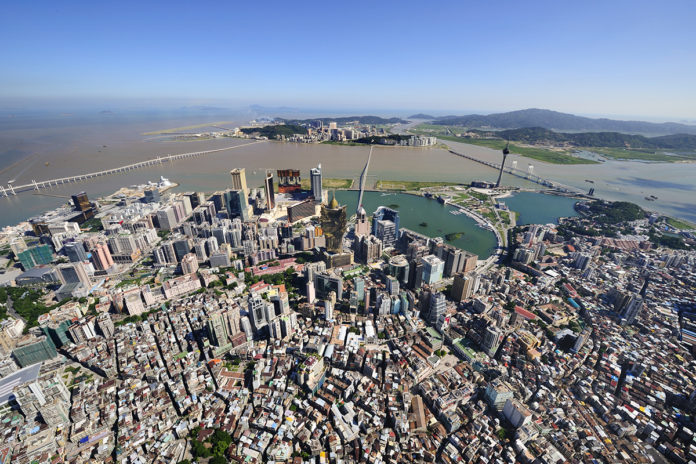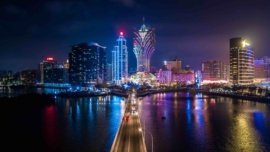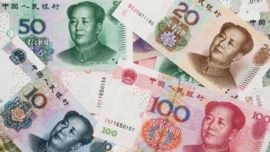South Korean coffee chain Tom N Toms Coffee has set its sights on opening 20 stores in the South China market by year-end, including four outlets in Macau, selling an aromatic around-the-clock lifestyle with a liberal sprinkling of the arts to top the experience By Tony Lai From cream cheese pretzel to honey buttered bread, from caffe Americano to java chip drink. These are what a coffee shop at Avenida do Conselheiro Ferreira de Almeida offers on its à la carte menu, in a striking resemblance to what customers can expect from Western coffee chains like Starbucks. Even its name, Tom N Toms Coffee, exudes a European flavour rather than its South Korean roots. One of the top five Korean coffee chains, Tom N Toms opened its first store here in February, a step that is anticipated to translate into 20 shops in the South China market by the end of this year. Its strongest suit, according to a young local entrepreneur who brought the franchise to the territory, is not its coffee or food but its lifestyle – a unique spot for locals to chill with loved ones and friends at any time of the day or night, with a liberal dose of arts and culture thrown in. “We’re different from other cafés and coffee chains,” said Felix Se, Tom N Toms’ South China Chief Executive Officer. “They’re selling products but we’re selling a lifestyle, a culture.” “No other cafes in Macau [offer] the spacious per [person] area we have here. Each customer can find a comfy seat here and relax,” he said of the two-storey 4,000 square foot flagship store. The other three stores that are planned for opening here within this year – in NAPE, Taipa and in a new casino resort – will also span some 1,500 to 2,500 square feet, he added, with an investment of about MOP10 million [US$1.25 million] slated for the Macau operations this year. In addition to sizeable areas, the Korean coffeehouse will strive to create an environment of arts and culture to entice coffee lovers. The second floor of the flagship store will feature exhibitions to showcase the works of local artists. “The exhibitions will switch in rotation, each lasting for one to two months,” Mr. Se revealed. “We won’t make this too commercialised as we genuinely hope to help promote the local cultural creative industry, as well.” The same floor will also feature book corners and separate rooms, referred to as “business rooms” for customers to reserve and meet clients in. Currently unavailable to the public, the ongoing refurbishment should be completed by the first half of this year, he says. “We’re focusing on improving our brand and satisfying the demands of our consumers so that they can come here to spend quality time with their friends and family members,” the 25-year old entrepreneur stressed. The other three prospective stores in the territory, although smaller in size, will also exhibit art, he added. Around the clock The world’s leading gaming hub, Macau doesn’t lack late night entertainment – from its casinos to saunas, karaoke bars, and watering holes – but Mr. Se sees a lack of venues here offering local residents a tranquil environment to socialise and hang out in after midnight. And Tom N Toms is determined to cater to this niche. “Right now, we’re opening from 2:00pm to 8:00pm [every day]. The next step will be 12 hours after the trial operation, and the official target is 24 hours,” he said, without commenting on whether they would do so within this year. “In theory, we want all our stores to open for 24 hours but it has to depend on the customer pattern in each district. It’s feasible for the flagship store, the one in NAPE and of course [the store] in the casino resort.” he remarked. But what stands in its way to opening around the clock is the same headache shared by other businesses here – human resources. “It requires 30-40 per cent more workers. Let’s say we need 20 employees at a store to maintain the usual operation. Opening for 24 hours will need six to eight more people,” he said. The lowest unemployment rate on record of 1.7 per cent for 15 consecutive months as of January is already a hurdle, and the opening of two new gaming resorts this year will deal a harder blow. “It’s absolutely difficult to recruit workers now and it’s more difficult to recruit competent workers. The casinos here absorb all the competent ones,” Mr. Se lamented. Korean frenzy Tom N Toms is the latest Korean coffee brand to venture into a Macau market where the Korean culture is all the rage. Its rival, Caffe Bene, the biggest Korean coffee chain by number of stores, opened its first outlet here in May last year. The coffeehouse did not respond to queries for comment on this story. A quick look into the number of Macau residents travelling to Korea helps shed some light on this frenzy. Over 56,300 residents visited South Korea last year using the services of travel agencies, surging 109.1 per cent from 2011, official figures show, compared with a 72.3 per cent growth in the overall number of outbound Macau residents over the same period. Korea’s popularity – not only strikingly evident in Macau but throughout Greater China – is not new. The term ‘Korean Wave’ was coined in 1999 to describe the growing Chinese appetite for Korea’s cultural exports, The Wall Street Journal reported last year. HSBC’s head of consumer goods and luxury Erwan Rambourg wrote in a research report earlier this year: “The ‘Korean wave’, a social/cultural trend supported by K-pop and soap operas, is helpful in solidifying Asian opinion around the idea that ‘Korean equals cool’ . . . [Their] products are also technically undeniably very high quality now.” But it is not the Korean soaps like last year’s big hit ‘My Love from the Star’ that caught Mr. Se’s attention when investigating the coffee franchise. “There are many things we can learn from the Korean culture. First, the Koreans are very committed to their work, and second they put a lot of resources into innovation,” he said. “That’s why the country has developed very rapidly in the past decade with some well-known conglomerates like Samsung, LG and Hyundai . . . Every time I go to South Korea the coffee houses there still surprise me with their new products and designs.” Expansion Tom N Toms launched its first store in the South China market in Guangzhou, Guangdong Province in February, followed by the opening of the Avenida Almeida store in the same month. Mr. Se, who owns the brand’s franchise rights for Macau, Hong Kong and nine Mainland provinces, is working to boost the store number to 20 by the end of this year, including four more stores in Guangdong, two in Chengdu in Sichuan Province, and one in Hong Kong. He did not reveal the exact overall investment – except for the MOP10 million budgeted for the MSAR – but did volunteer that the amount “is not small.” “We haven’t had any clear targets so far when we should break even… as we’ve only opened the first flagship store [here]. The important thing [for now] is to increase the public awareness of our brand,” the entrepreneur said. “But the Korean headquarters have given us a formula of IRR [internal rate of return] that is ideal for a store with a five-year rental lease to break even in two years.” Nevertheless, the coffeehouse’s ambitious plan has to deal with the slowing Mainland economy, which expanded at its slowest pace in almost a quarter of a century at 7.4 per cent in 2014. The business will also have to contend with the anti-corruption campaign launched by Chinese President Xi Jinping and the pounding being taken by the Macau gaming industry, with revenues falling for 10 consecutive months as at March, dragging down the city’s economy that declined for the first time in 15 years by 0.4 per cent last year. “We aren’t too worried about the Mainland and Macau markets,” Mr. Se remarked. “By contrast, we’re mostly anxious about the Hong Kong market, which is already crowded with too many players.” His group has so far been “greatly encouraged” by the reception to the brand here, with a customer mix of locals to tourists of 80:20 in the flagship store. “The consumers will not buy fewer coffees or fewer pretzels [even though the economy may not fare so well],” he concluded. The cup that keeps on giving Tom N Toms Coffee was founded by South Korean entrepreneur Kim Do-kyun in 2001 with the simple goal of helping customers “refresh your body and soul”. After more than a decade, the coffee chain now has over 400 stores in South Korea and more than 30 stores overseas. Samsung Economic Research Institute estimated in a 2012 report that Tom N Toms was among the top five Korean coffee chains in terms of the number of stores alongside rivals Caffe Bene and Hollys Coffee. Anyoung haseyo! Coffee lovers around the world, including Macau, are increasingly saying anyoung haseyo to more South Korean names providing their morning caffeine, in addition to the Western brands they are accustomed to. British newspaper The Financial Times reported last September that Korean coffee chains were rapidly expanding their presence in Mainland China, a market valued at RMB40 billion (US$6.44 billion) by 2017, doubling from RMB20 billion in 2013. The Mainland market will become ‘the war between Korean, American, British [and] domestic coffee chains and stylish independent cafés’, according to the report. Financial magazine Forbes also reported last year that Caffe Bene, Korea’s biggest coffee chain by number of stores, was ramping up its number of stores across the world. The brand with Korean actor Jang Keun Suk as its spokesperson aims to open 10,000 shops across the globe by 2020, compared to 1,657 stores as at end-2014. The ambitions of the Korean labels likely stems from how much Koreans love their daily hit of caffeine. A study released by the Korean Ministry of Agriculture, Food and Rural Affairs in January found that people in Korea drank coffee 12.2 times a week in 2013 whilst only consuming their national dish, kimchi, 11.9 times per week.
—
























